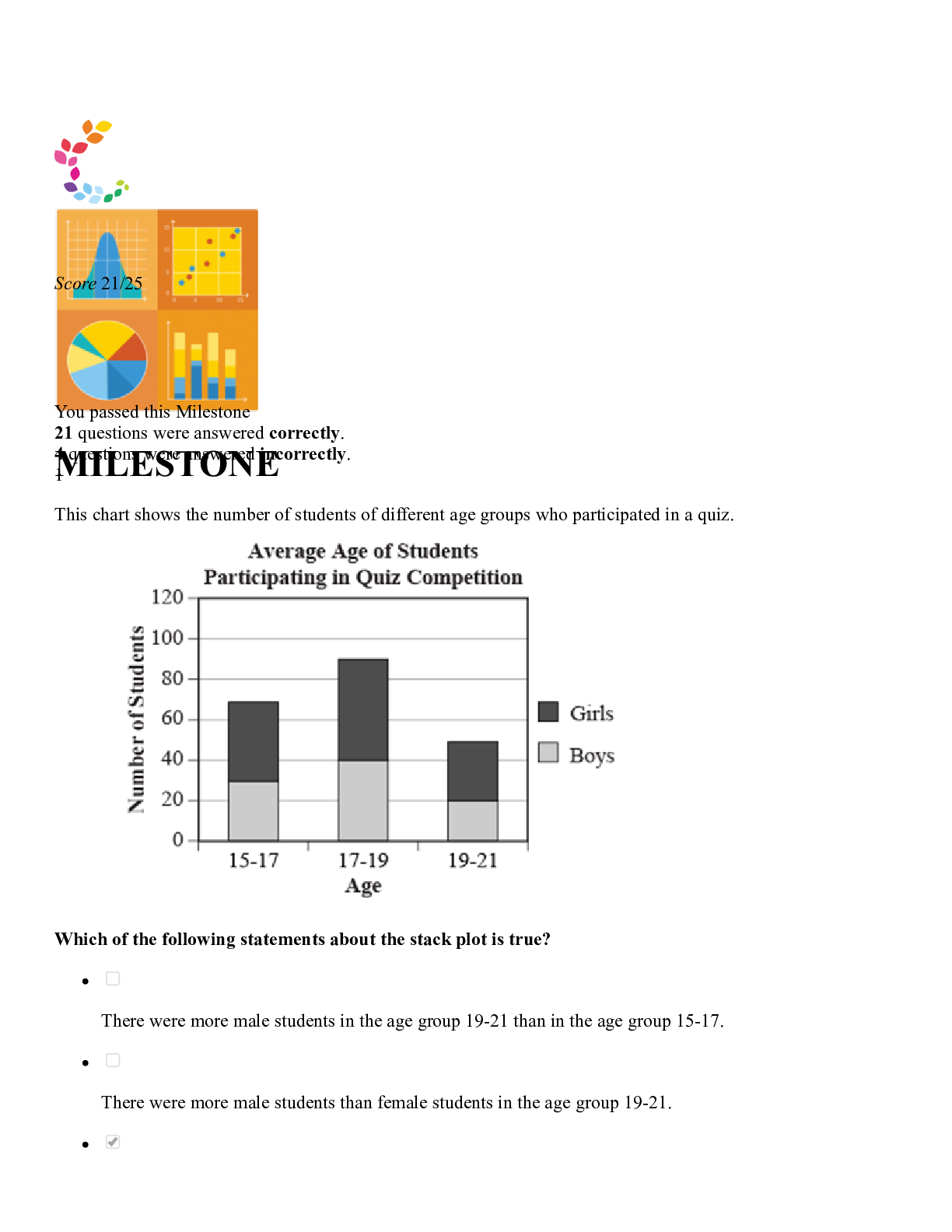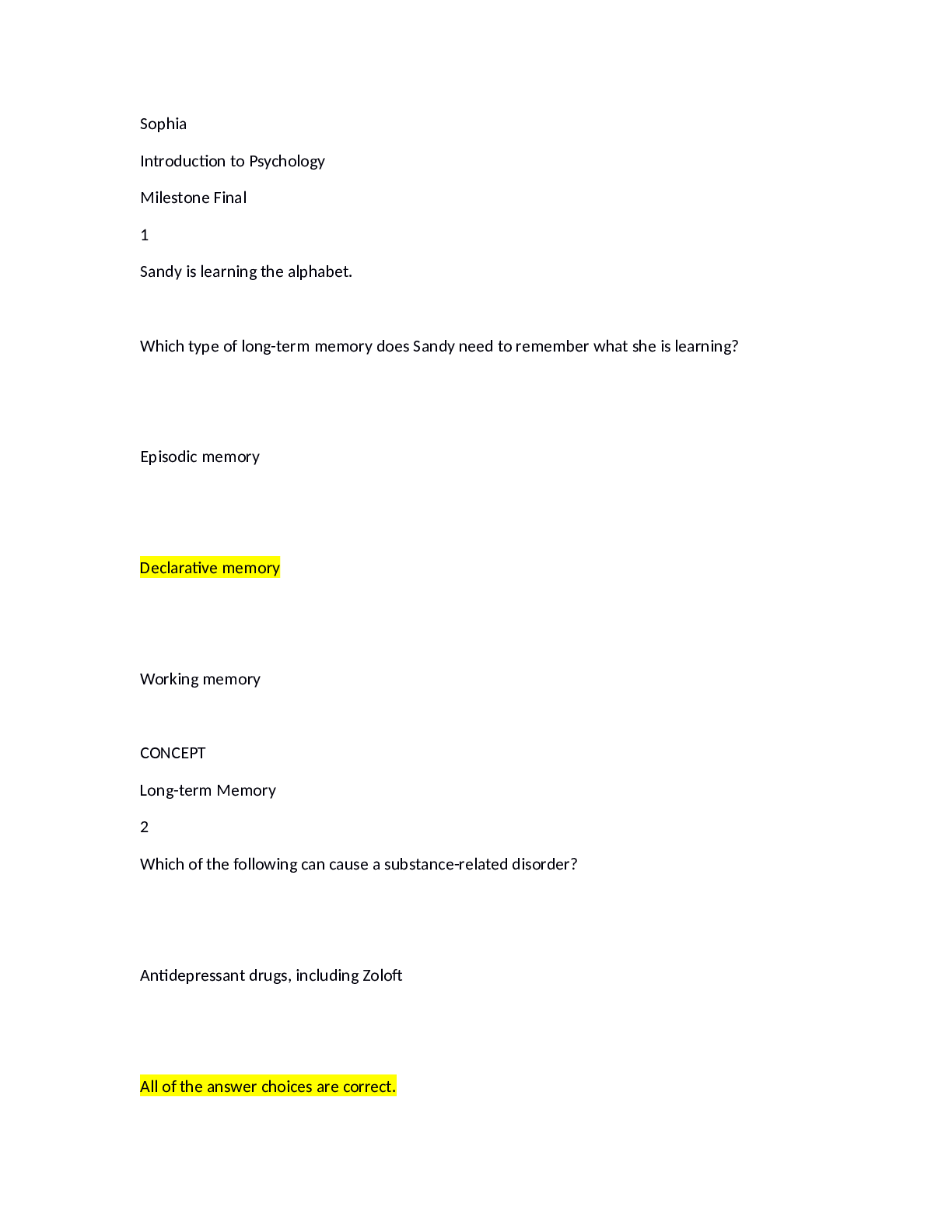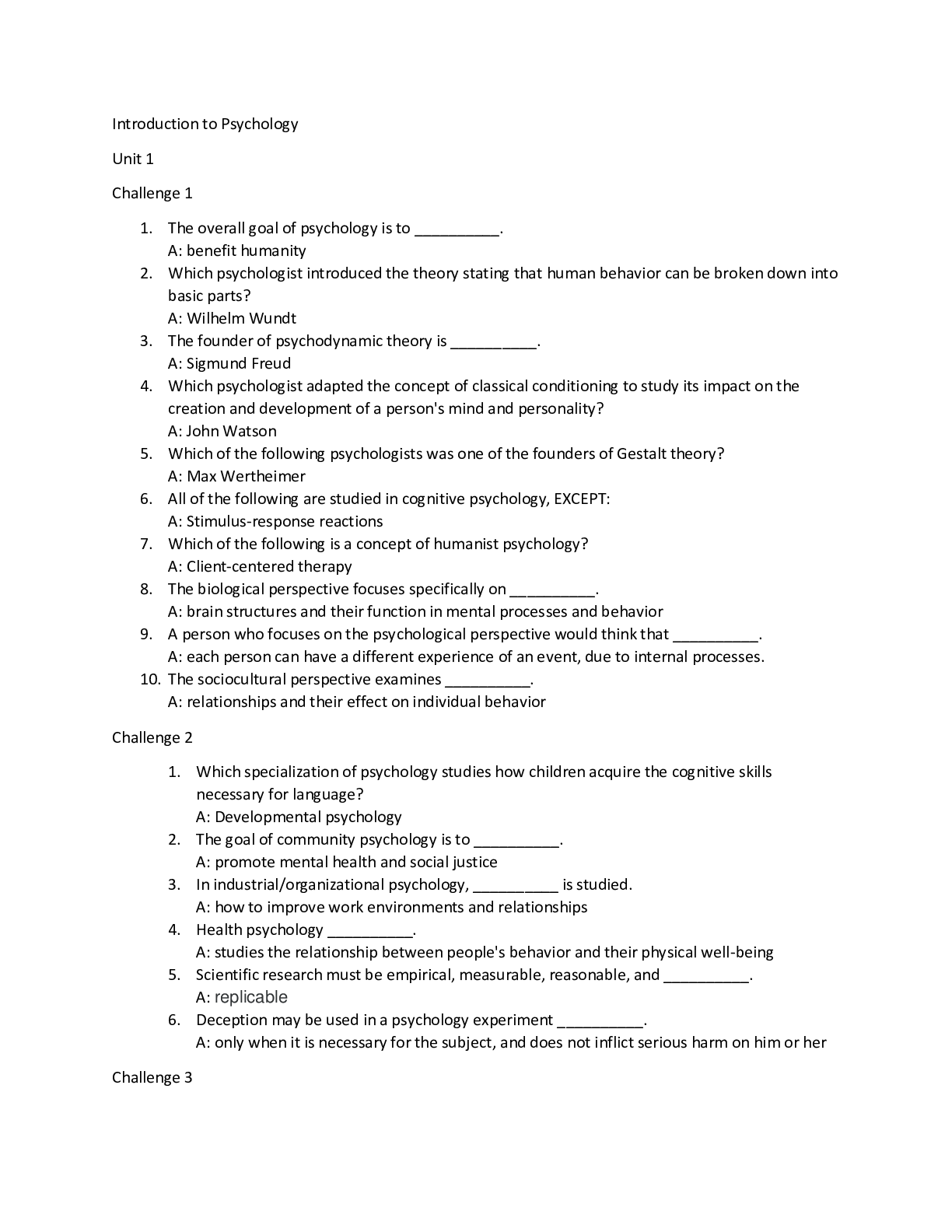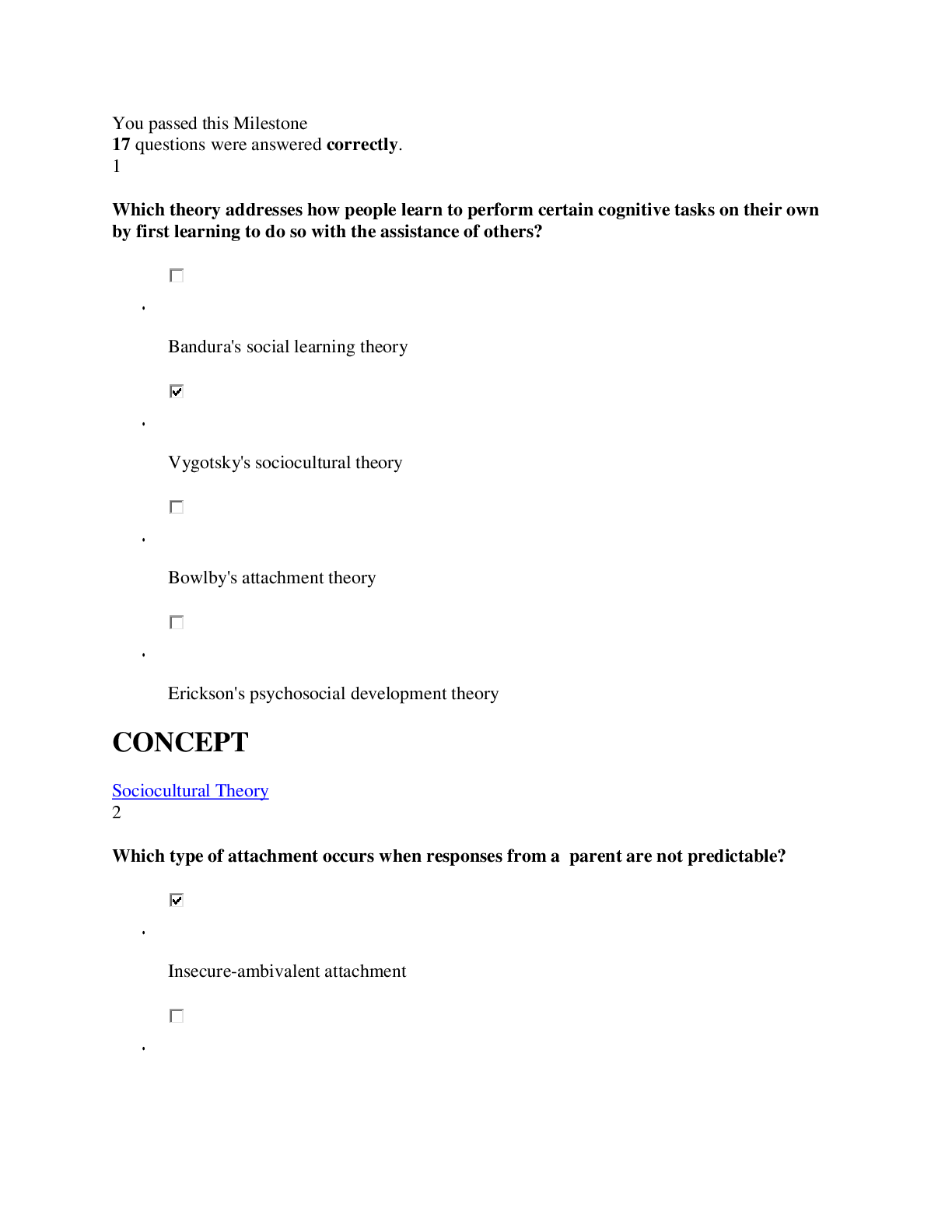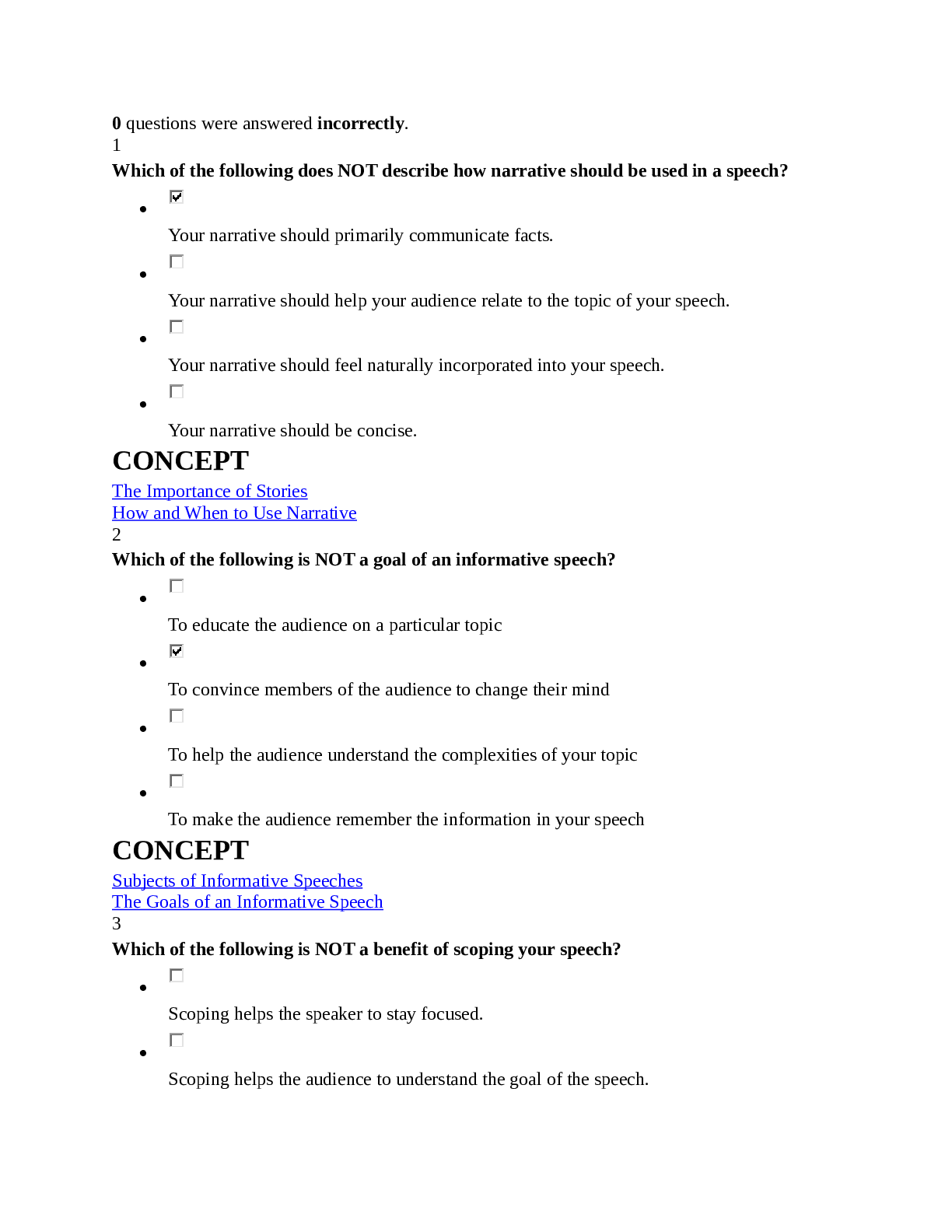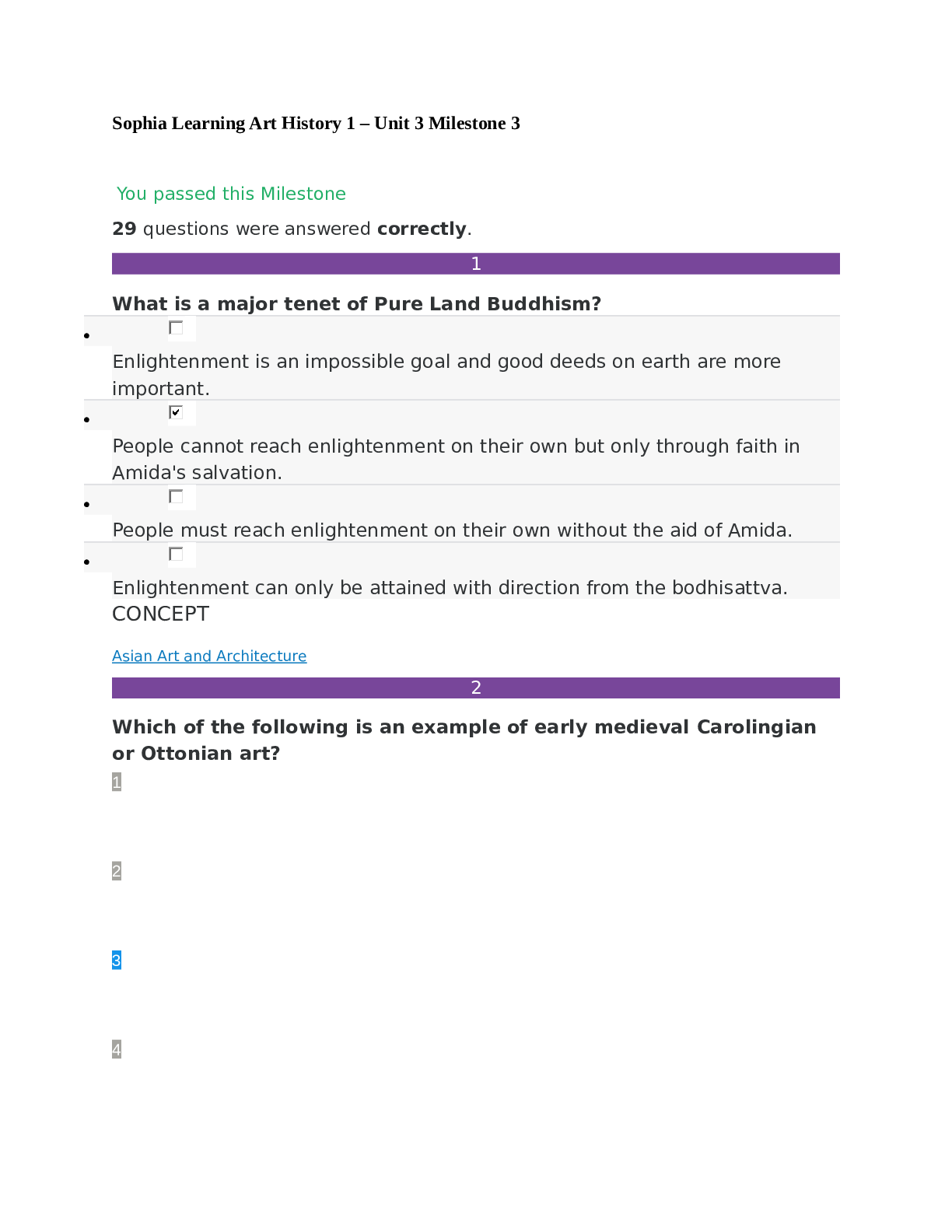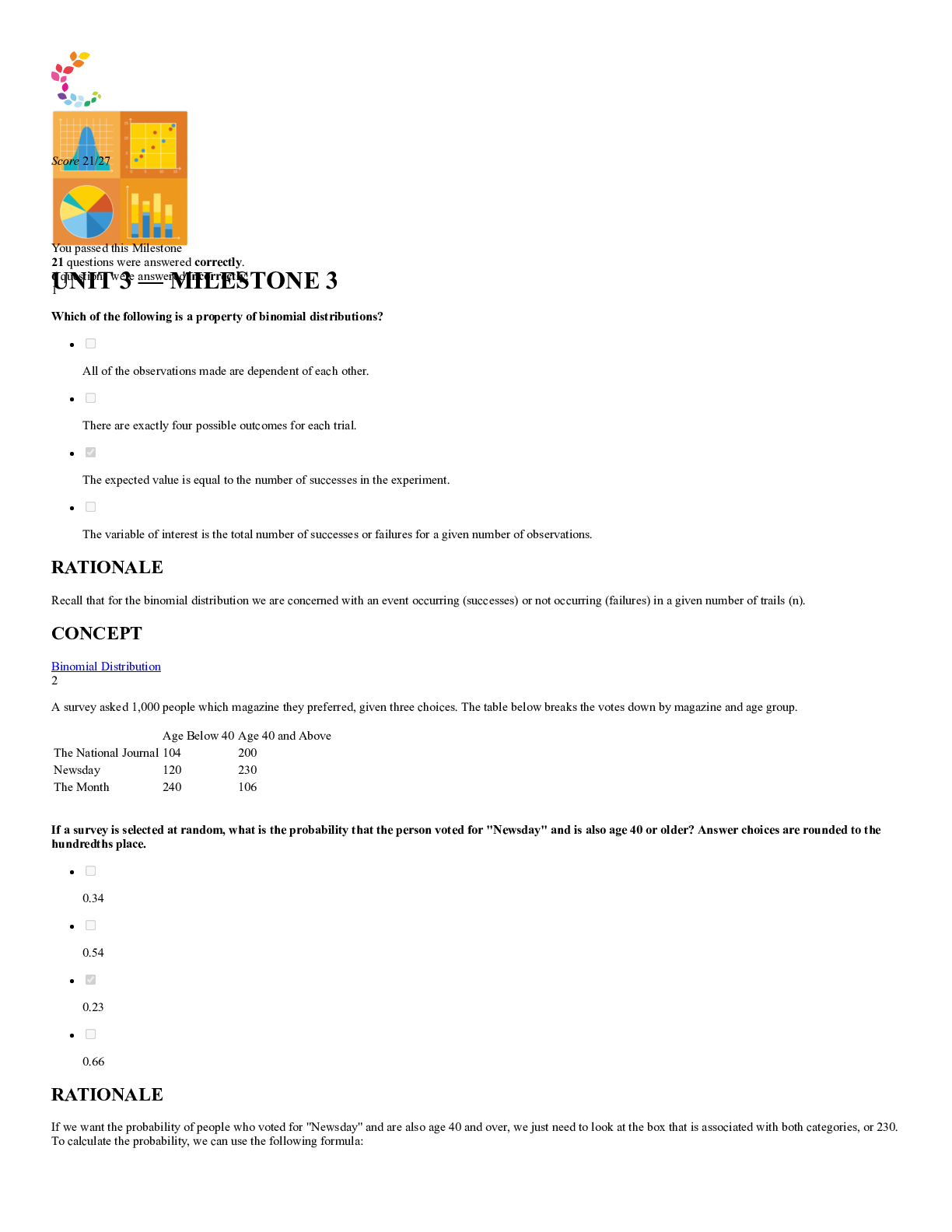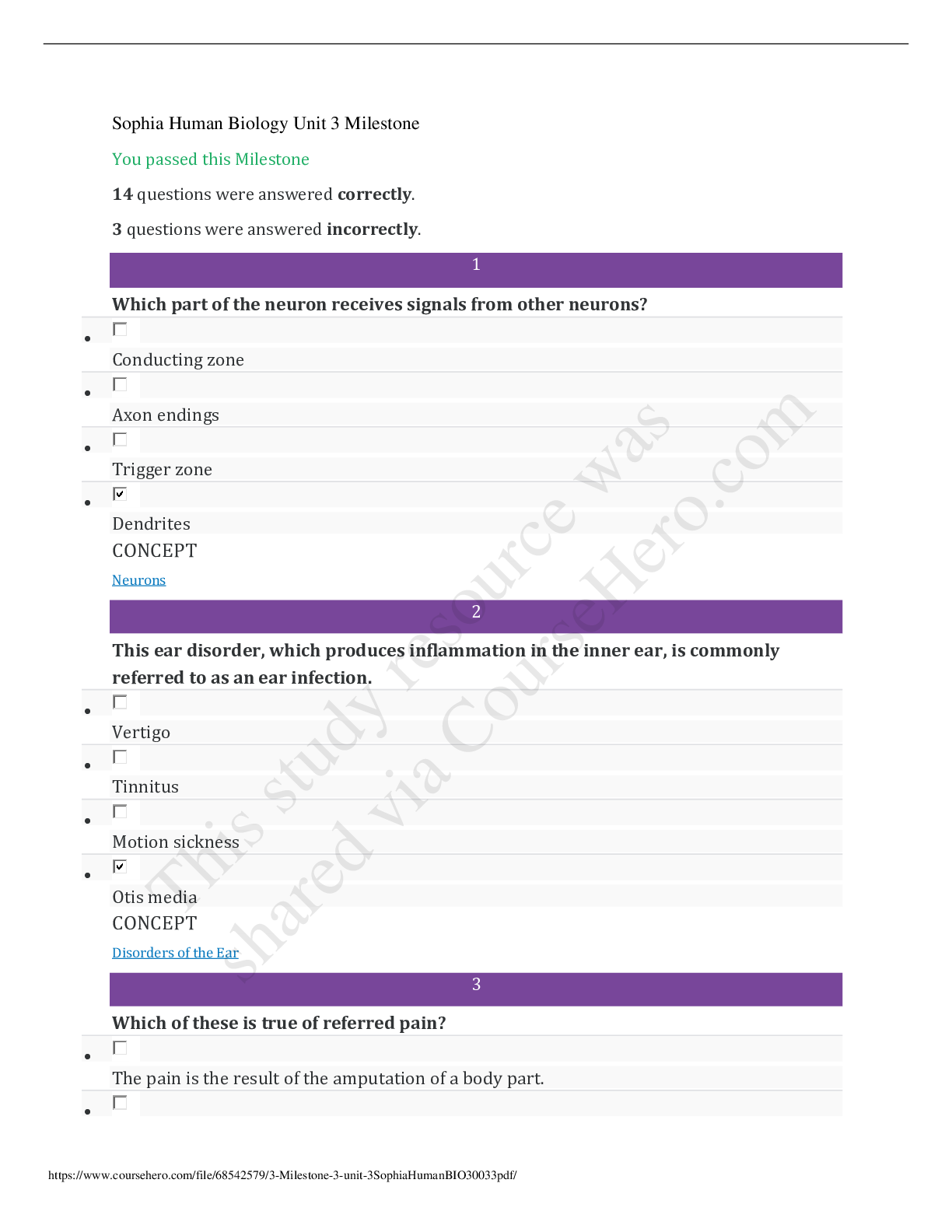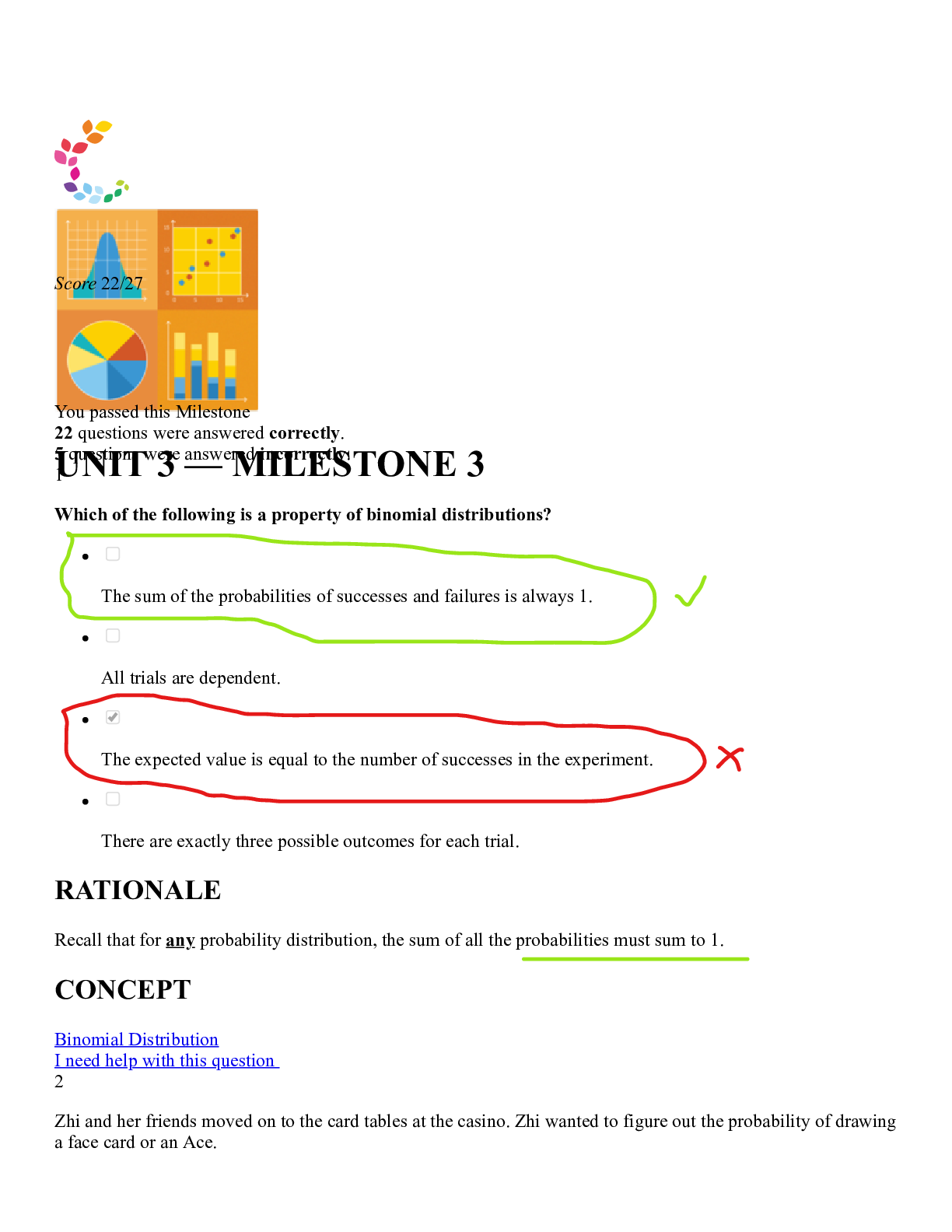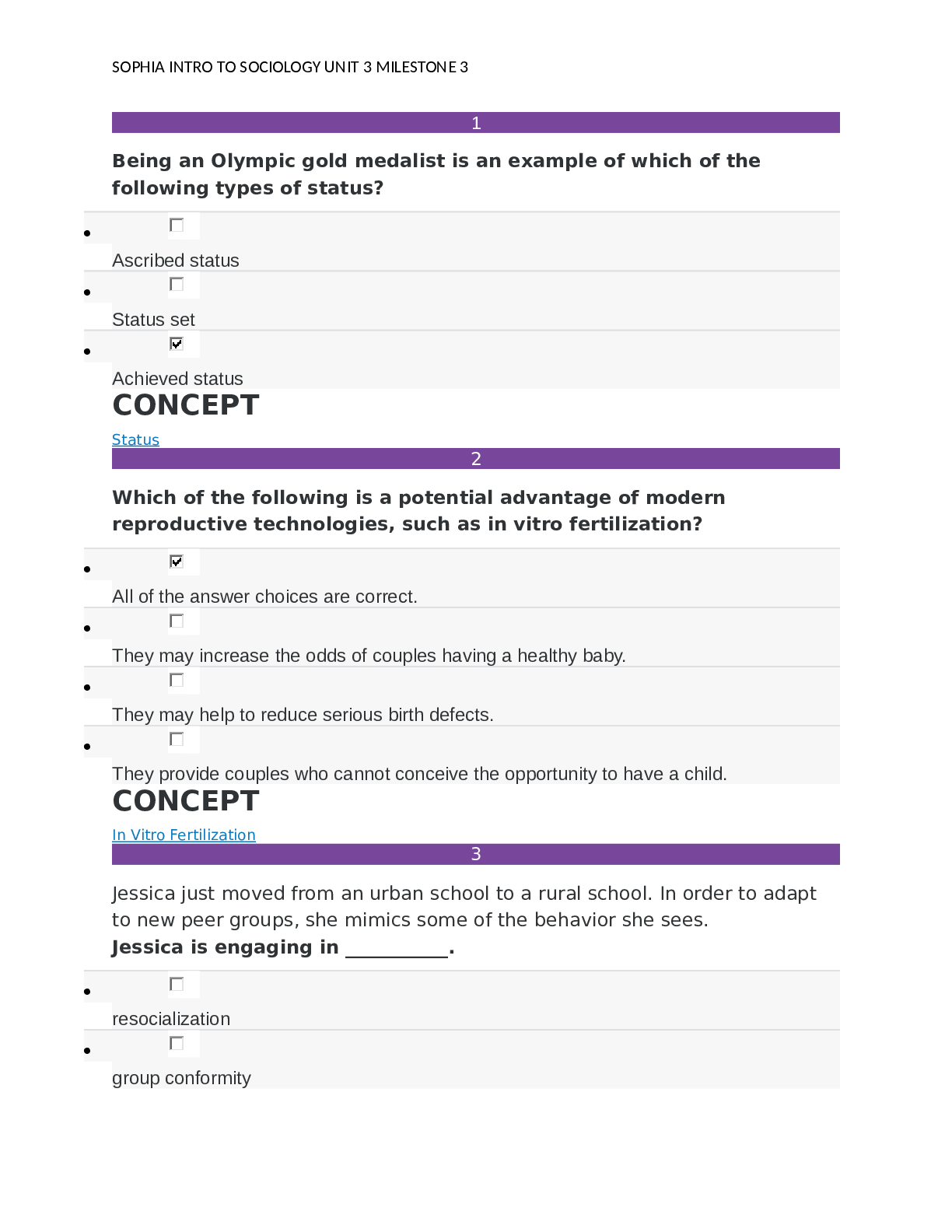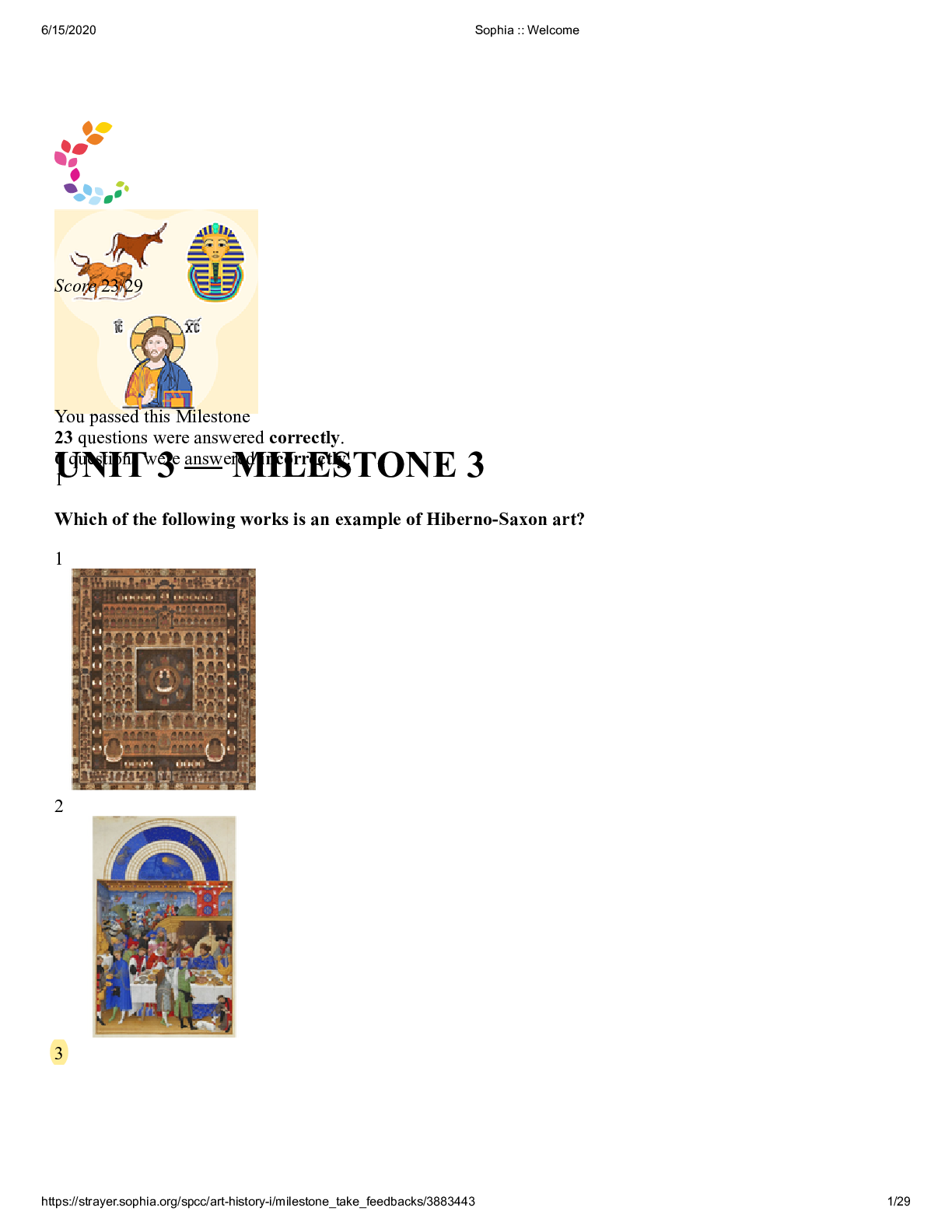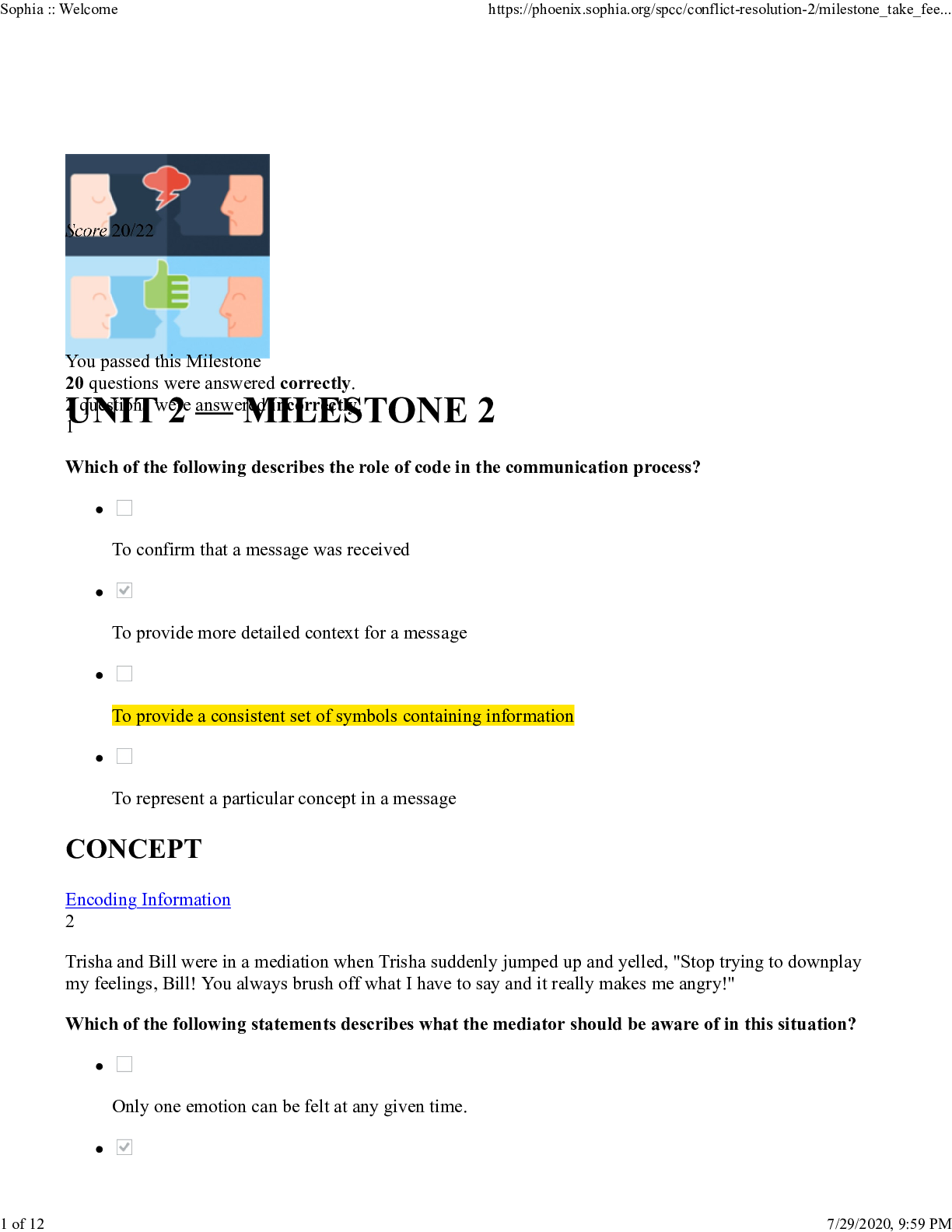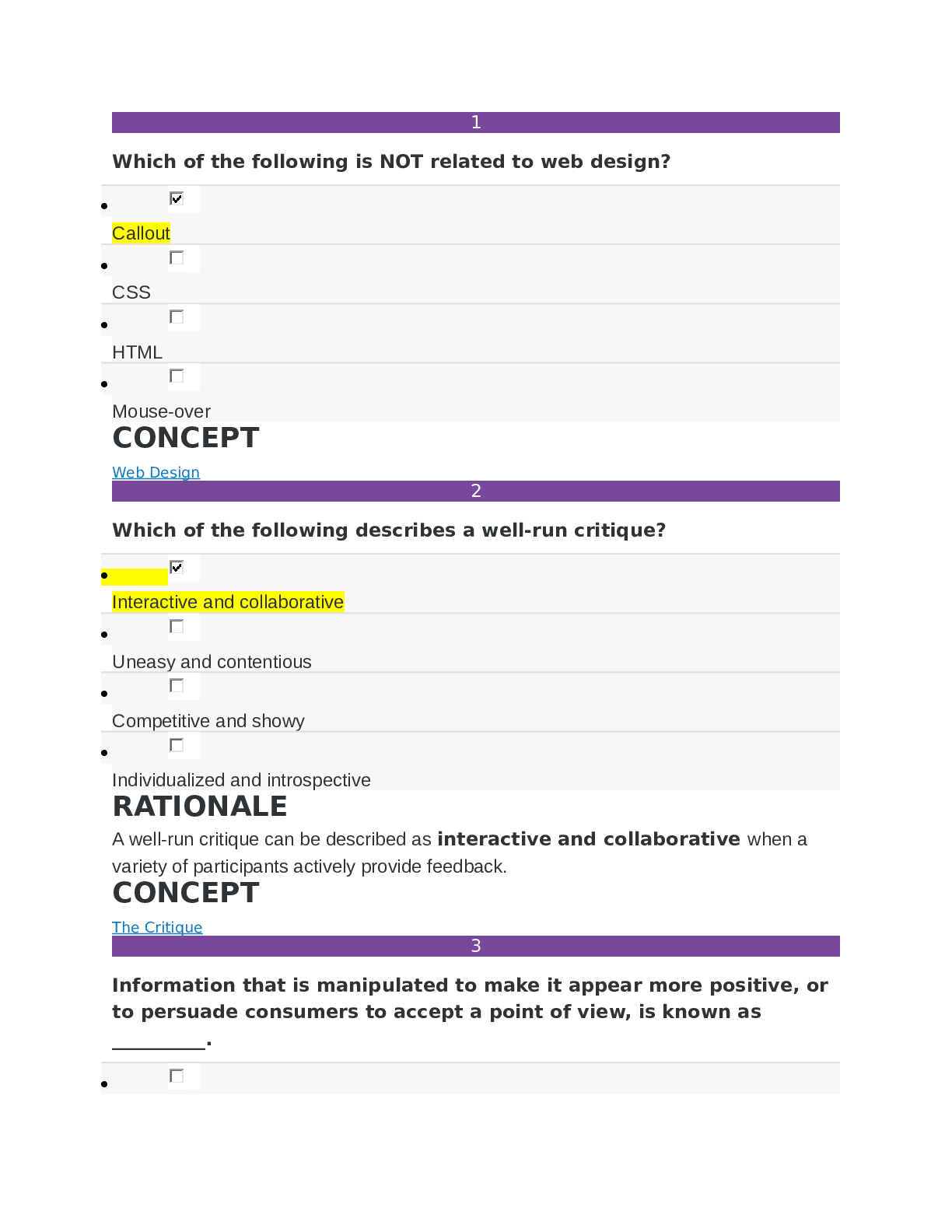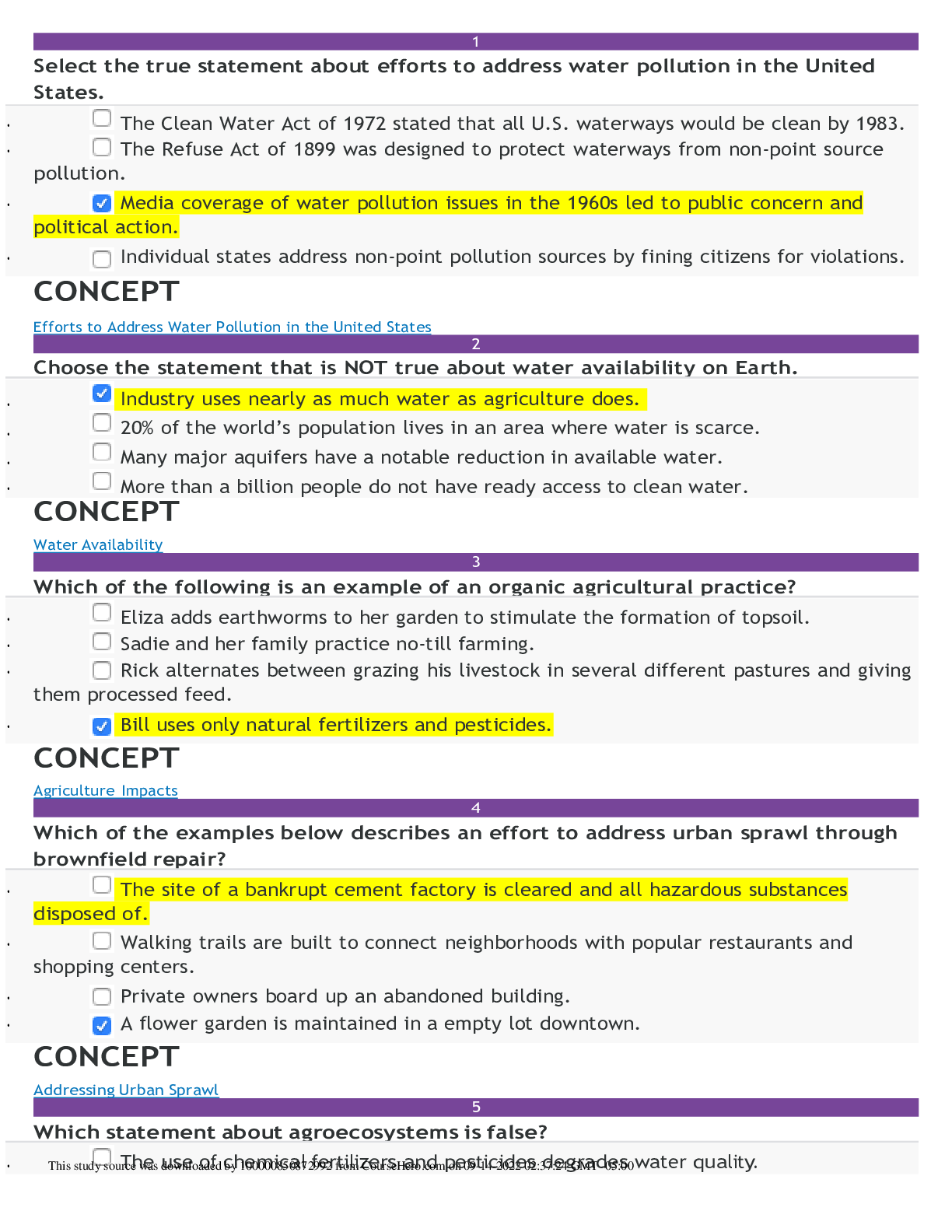Statistics > SOPHIA Milestone > Sophia Statistics Unit 3 Milestone 2022 Questions and Answers -All Answers Are Correct -Graded 100% (All)
Sophia Statistics Unit 3 Milestone 2022 Questions and Answers -All Answers Are Correct -Graded 100%
Document Content and Description Below
Which of the following is a property of binomial distributions? The sum of the probabilities of successes and failures is always 1. All trials are dependent. The expected value is equal to the numb... er of successes in the experiment. There are exactly three possible outcomes for each trial. RATIONALE Recall that for any probability distribution, the sum of all the probabilities must sum to 1. CONCEPT Binomial Distribution I need help with this question 2 Zhi and her friends moved on to the card tables at the casino. Zhi wanted to figure out the probability of drawing a face card or an Ace. Choose the correct probability of drawing a face card or an Ace. Answer choices are in the form of a percentage, rounded to the nearest whole number. 8% 4% 31% 25% RATIONALE Since the two events, drawing a face card and drawing an ace card, are non-overlapping, we can use the following formula: CONCEPT "Either/Or" Probability for Non-Overlapping Events I need help with this question 3 John is playing a game with a standard deck of playing cards. He wants to draw a jack on the first try. Which of the following statements is true? The probability that John draws a jack on the first try is 1/13. If John replaces the card, re-shuffles, and draws again, the probability that he will pull another jack increases. The probability that John draws a jack on the first try is 1/13. If John replaces the card, re-shuffles, and draws again, the probability that he will pull another jack stays the same. The probability that John draws a jack on the first try is 3/13. If John replaces the card, re-shuffles, and draws again, the probability that he will pull another jack stays the same. The probability that John draws a jack on the first try is 1/13. If John replaces the card, re-shuffles, and draws again, the probability that he will pull another jack decreases. RATIONALE Events are said to be independent if one event does not influence the likelihood of the other. Since John reshuffles the deck and puts the card back in the deck, the probability should be the same and the first draw will not influence the second. CONCEPT Independent vs. Dependent Events I need help with this question 4 A magician asks an audience member to pick any number from 6 to 15. What is the theoretical probability that an individual chooses the number the magician has in mind? RATIONALE If we suppose that the card chosen by the magician is fixed, then there are 10 possible values, {6, 7, 8, 9, 10, 11, 12, 13, 14, or 15}, that are all equally likely. So, the probability that a specific value is chosen is: CONCEPT Theoretical Probability/A Priori Method I need help with this question 5 Select the following statement that describes non-overlapping events. Receiving the Queen of Diamonds fulfills Luke's need of getting both a face card and a diamond. Luke wants a red card so he can have a winning hand, and he receives the five of clubs. Luke needs to roll an odd number to win. When it’s his turn, he rolls a five. To win, Luke needs a black card. He receives an eight of spades. RATIONALE Events are non-overlapping if the two events cannot both occur in a single trial of a chance experiment. Since he wants a red card {Ace, 2, 3, 4, 5, 6, 7, 8, 9, 10, Jack, Queen, or King: In either Diamond or Hearts} and he got the Five of Clubs, there is no overlap. CONCEPT Overlapping Events I need help with this question 6 Jake tosses a coin and rolls a six-sided die. All of the following are possible outcomes EXCEPT: Tails, Three Heads, Seven Heads, Five Tails, One RATIONALE Recall a coin has heads and tails and a standard die has six values, {1, 2, 3, 4, 5, or 6}. So, obtaining a value of 7 is not possible. CONCEPT Outcomes and Events I need help with this question 7 Asmita went to a blackjack table at the casino. At the table, the dealer has just shuffled a standard deck of 52 cards. Asmita has had good luck at blackjack in the past, and she actually got three blackjacks with Aces in a row the last time she played. Because of this lucky run, Asmita thinks that Ace is the luckiest card. The dealer deals the first card to her. In a split second, she can see that it is a non-face card, but she is unsure if it is an Ace. What is the probability of the card being an Ace, given that it is a non-face card? Answer choices are in a percentage format, rounded to the nearest whole number. 8% 77% 69% 10% RATIONALE The probability of it being an Ace given it is a Non-face card uses the conditional formula: Note, that in a standard deck of 52 cards, there are 12 face cards, so 40 non-face cards. Of those non-face cards, there are only 4 Aces. CONCEPT Conditional Probability I need help with this question 8 Patricia was having fun playing poker. She needed the next two cards dealt to be spades so she could make a flush (five cards of the same suit). There are 12 cards left in the deck, and three are spades. What is the probability that the two cards dealt to Patricia (without replacement) will both be spades? Answer choices are in percentage format, rounded to the nearest whole number. 17% 18% 5% 25% RATIONALE If there are 12 cards left in the deck with 3 spades, the probability of being dealt 2 spades if they are dealt without replacement means that we have dependent events because the outcome of the first card will affect the probability of the second card. We can use the following formula: The probability that the first card is a spade would be 3 out of 12, or . The probability that the second card is a spade, given that the first card was also a spade, would be because we now have only 11 cards remaining and only two of those cards are spades (since the first card was a spade). So we can use these probabilities to find the probability that the two cards will both be spades: CONCEPT "And" Probability for Dependent Events I need help with this question 9 David is playing a game where he flips two coins and counts the total number of heads. The possible outcomes and probabilities are shown in the probability distribution below. What is the expected value for the number of heads from flipping two coins? 1 2 3 1.5 RATIONALE The expected value, also called the mean of a probability distribution, is found by adding the products of each individual outcome and its probability. We can use the following formula to calculate the expected value, E(X): CONCEPT Expected Value I need help with this question 10 Using the Venn Diagram below, what is the conditional probability of event A occurring, assuming that event B has already occurred [P(A|B)]? 0.05 0.22 0.71 0.10 RATIONALE To get the probability of A given B has occurred, we can use the following conditional formula: The probability of A and B is the intersection, or overlap, of the Venn diagram, which is 0.1. The probability of B is all of Circle B, or 0.1 + 0.35 = 0.45. CONCEPT Conditional Probability I need help with this question 11 The average number of tunnel construction projects that take place at any one time in a certain state is 3. Find the probability of exactly five tunnel construction projects taking place in this state. 0.048 0.023 0.10 0.020 RATIONALE Since we are finding the probability of a given number of events happening in a fixed interval when the events occur independently and the average rate of occurrence is known, we can use the following Poisson distribution formula: P left parenthesis X equals k right parenthesis equals fraction numerator lambda to the power of k e to the power of negative lambda end exponent over denominator k factorial end fraction The variable k is the given number of occurrences, which in this case, is 5 projects. The variable λ is the average rate of event occurrences, which in this case, is 3 projects. CONCEPT Poisson Distribution I need help with this question 12 Peter randomly draws a card from a deck of 24. The odds in favor of his drawing a spade from the cards are 1:3. What is the probability ratio for Peter to draw a spade? RATIONALE Recall that we can go from " " odds to a probability by rewriting it as the fraction " ". So odds of 1:3 is equivalent to the following probability: CONCEPT Odds I need help with this question 13 Ryan is playing a multiplication game with a pile of 26 cards, each with a number on them. Each turn, he flips over two of the cards, and has to multiply the numbers. How many possible outcom [Show More]
Last updated: 1 year ago
Preview 1 out of 22 pages
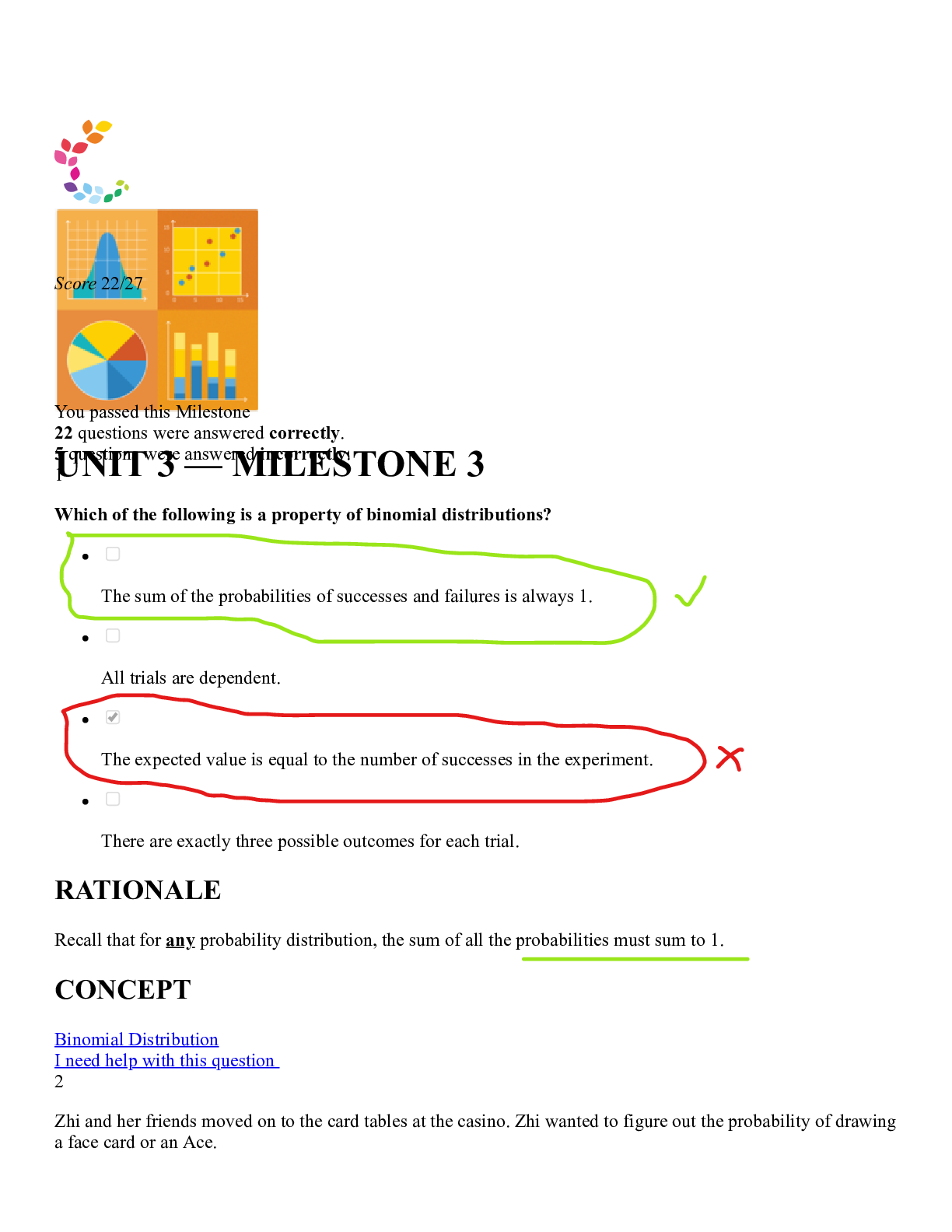
Reviews( 0 )
Document information
Connected school, study & course
About the document
Uploaded On
Jun 01, 2022
Number of pages
22
Written in
Additional information
This document has been written for:
Uploaded
Jun 01, 2022
Downloads
0
Views
91




